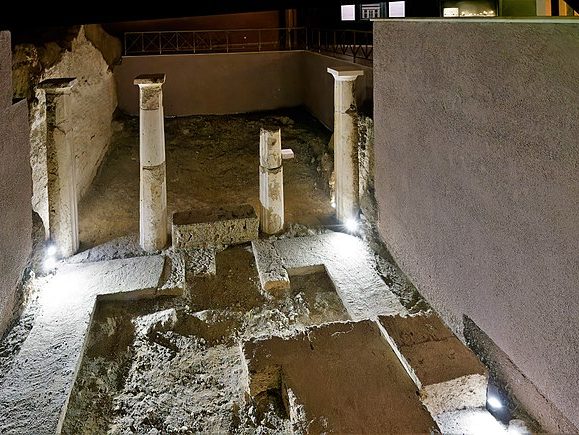Summary
The Cradle of Macedonian Royalty
Nestled in the rolling hills of Northern Greece, the Palace of Aigai stands as a testament to ancient splendor. This archaeological marvel once served as the royal residence of the Macedonian dynasty. Its breathtaking ruins whisper tales of Philip II, father of Alexander the Great. Visitors walk the austere halls where these historic figures once roamed. The palace’s expansive structure showcases intricate floor mosaics and majestic columns. These elements shed light on the architectural mastery of the era. The site serves as a beacon for scholars and history enthusiasts alike. It offers a vivid window into Macedonia’s powerful past.
Get your dose of History via Email
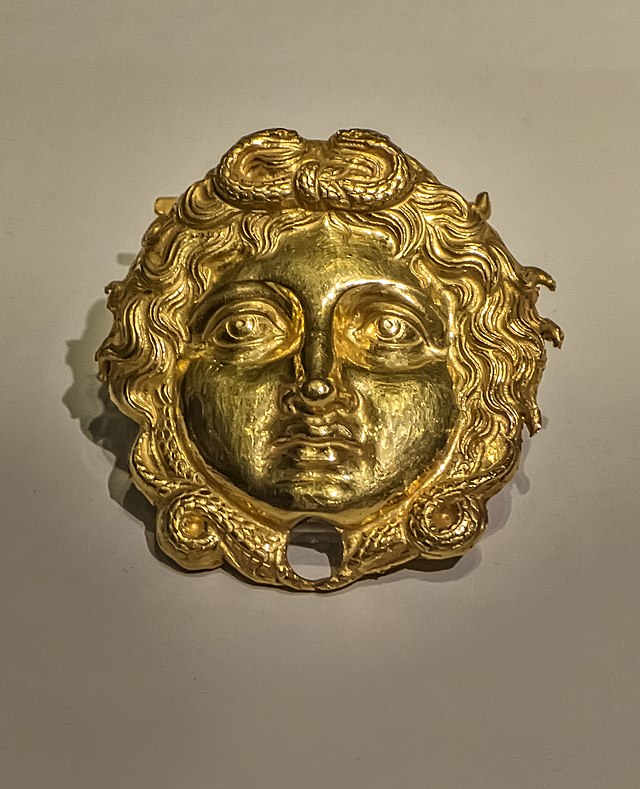
The Epicenter of Hellenistic Culture
The Palace of Aigai was more than a royal abode; it was the heart of Hellenistic civilization. Its grandeur is evident in the remains of its awe-inspiring theater. Here, decisions that shaped history took place amidst a backdrop of artistic and political gatherings. The theater’s presence underlines Aigai’s significance as a cultural and political hub. It speaks to the intellectual and creative spirit that characterized the era. The palace grounds and the surrounding city of Vergina now house a wealth of artifacts. These encompass golden crowns and finely wrought weapons. Each artifact offers insights into the daily life and opulent ceremonies of Macedonia’s elite.
A Journey Through Time
As UNESCO World Heritage Site, the Palace of Aigai invites visitors on a journey through time. Its world-class museum displays reveal the intricate tapestry of history woven into this region. The site encapsulates the confluence of mythology, historical conquests, and the rise of one of antiquity’s greatest empires. For those seeking to immerse themselves in the richness of ancient times, Aigai offers an unparalleled experience. It unearths the many layers of Macedonian history. These are compacted over centuries and invites onlookers to marvel at its enduring legacy.
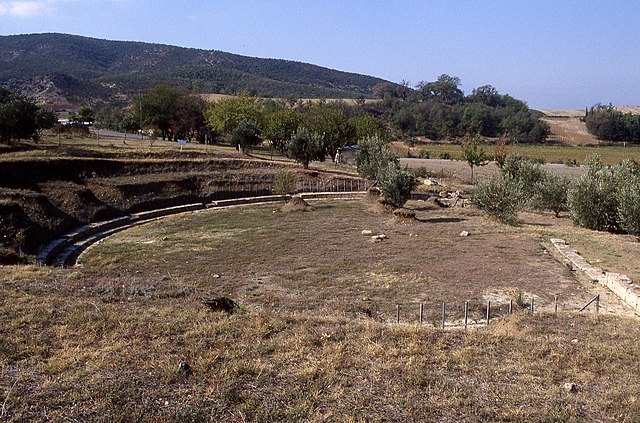
Historical Background of Palace of Aigai
The Macedonian Seat of Power
The Palace of Aigai, located in the northern Greek region of Macedonia, stands as a poignant symbol of ancient grandeur. With origins tracing back to the early Iron Age, Aigai was the first capital of the Macedonian kingdom. This commanding site witnessed the rule of several legendary figures, including King Philip II. He expanded the kingdom’s influence and improved the administrative system. Alexander the Great, his son, spent his early years within these walls before embarking on his remarkable world conquests. The palace remains a crucial link to these transformative leaders. It also underscores the enduring legacy of Macedonian might.
An Architectural Marvel
The palace, famed for its expansive layout and ornate architecture, served as a demonstration of Macedonian wealth and power. The complex included a variety of public, ceremonial, and private spaces. It reflected the sophisticated taste and lifestyle of its royal inhabitants. Craftsmen used local and imported materials to create stunning visual effects. For example, pebble mosaics decorated the floors with intricate designs. These artistic details offer insights into the era’s aesthetic sensibilities and technical skill. Historians and archaeologists highlight the structure’s strategic placement. It overlooks the lush plains of the region, symbolizing the watchful eyes of the Macedonian throne over its territory.
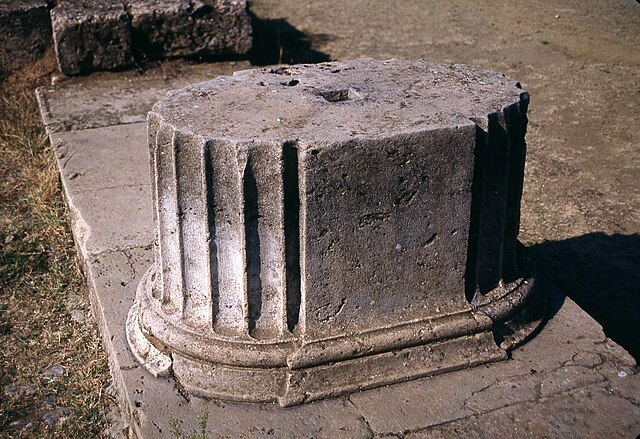
Cultural and Religious Significance
Beyond politics and power, the Palace of Aigai played a significant role in cultural and religious life. It hosted grand festivals and athletic competitions. These events honored the gods and showcased the physical prowess of participants. Moreover, the site was a renowned religious center, featuring several sanctuaries and temples. The Eucleia Sanctuary, dedicated to the worship of heroic virtues, illustrates the palace’s spiritual importance. The discovery of rich and elaborate grave offerings further indicates the site’s ritual significance. They show an unparalleled respect for the divine and the afterlife in Macedonian culture.
The decline of Aigai came with the rise of the nearby city of Pella as a new administrative capital. Although Aigai lost its political prominence, its cultural and historical significance continued to grow over the centuries. Today, the Palace of Aigai serves as a treasure trove for historians. It offers insights into the evolution of Macedonian kingship and governance. The ongoing excavation and conservation efforts ensure that the palace remains a source of national pride. It continues to fascinate scholars and tourists alike. Its rich heritage unfolds with each layer of earth and stone that is carefully examined.
The powerful legacy of Aigai resonates through history as a reminder of Macedonia’s golden age. It draws visitors from across the globe who seek to connect with a bygone era of innovation and ambition. The Palace of Aigai stands as a beacon of ancient civilization. Its tale is one of triumph, vision, and an indelible mark left on the annals of time. Its indomitable spirit lives on, welcoming all who wish to delve into its storied past and imagine the magnificence that once defined this iconic palace.
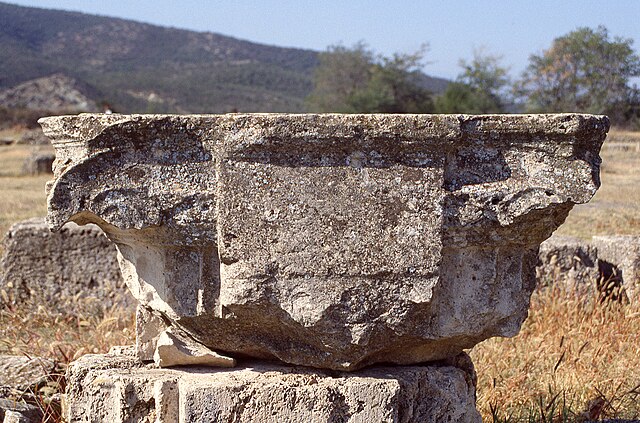
The Discovery of Palace of Aigai
A Landmark Revelation
The modern rediscovery of the Palace of Aigai in the 19th century marked a pivotal moment in archaeological history. Greek archaeologist Manolis Andronikos led the notable exploration. His team unveiled the ancient site in 1977, uncovering significant historical treasures. This momentous event came after tantalizing clues hinted at the palace’s location. Before this find, knowledge of Aigai’s royal residence was primarily from historical texts.
Manolis Andronikos: The Visionary
Manolis Andronikos, a professor at the Aristotle University of Thessaloniki, spent years studying the region. His dedication to finding Aigai’s lost palace was relentless. The discovery was ultimately beneath a large earthen mound called the Great Tumulus. This find was in the small village of Vergina, which proved to be the ancient city of Aigai. His team recognized the landscape’s potential for hiding significant remnants from Macedonia’s past.
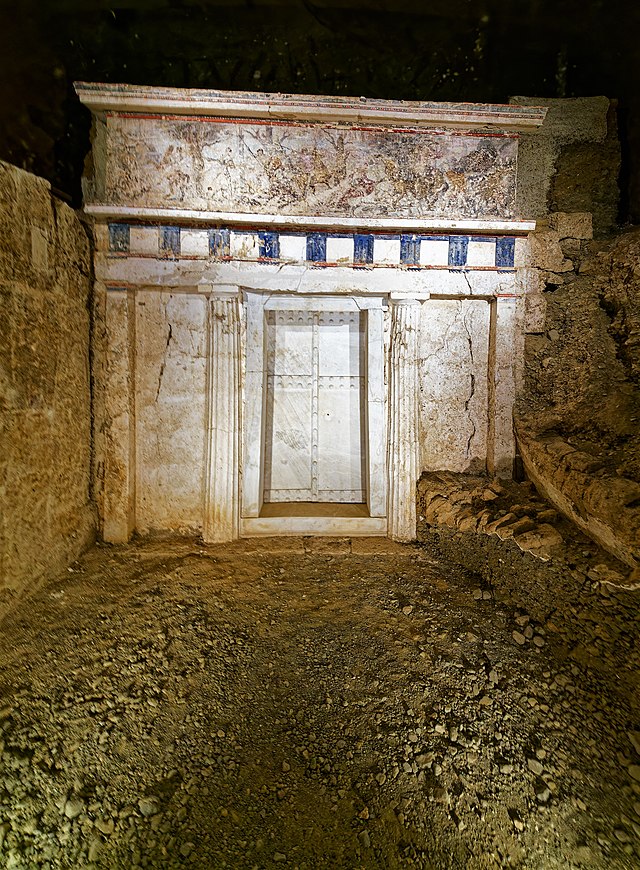
Unearthing Royal Tombs
The excavation efforts revealed not just the palace but also a cluster of royal tombs. These tombs were brimming with artifacts that offered glimpses into the lives of Macedonia’s rulers. Among these findings, Andronikos’ team identified the tomb of King Philip II. His meticulous research into Macedonia’s history enabled an accurate identification. This discovery was a cornerstone in understanding Macedonia’s lineage and influence.
The artifacts found within the palace and the royal tombs were numerous and varied. They included ornate weapons, exquisite jewelry, and delicate frescoes. Each artifact provided a tangible connection to Macedonia’s bygone era. The preservation state helped researchers piece together daily life and royal customs. The Palace of Aigai thus began to emerge as a historical epicenter of immense significance.
Today, the Palace of Aigai and its findings continue to inspire awe and academic interest worldwide. The site is a testament to the ingenuity of ancient civilizations. It has inspired a deeper appreciation for the architectural and cultural achievements of the period. Furthermore, it has underscored the richness of Greece’s archaeological heritage. The discovery of the Palace of Aigai has, indeed, broadened our understanding of the past. Its open doors invite all to learn and marvel at its enduring splendor.
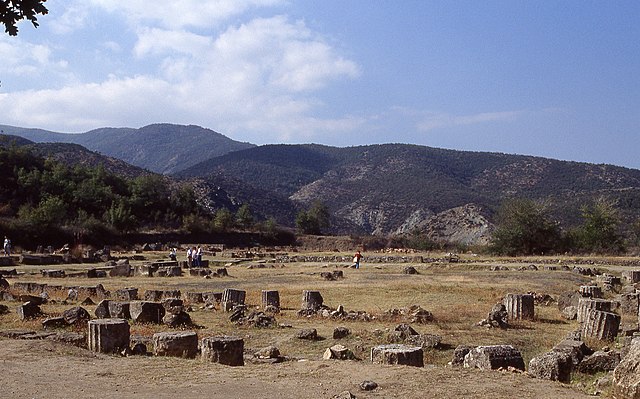
Cultural Significance, Dating methods, Theories and Interpretations
The Resonance of Greek Antiquity
The Palace of Aigai’s rich cultural significance embodies the glory of ancient Greek civilization. As the cradle of Macedonian power, the palace was the setting for major political and social events that shaped history. It represents the strategic wisdom of the Macedonian rulers and their contribution to Hellenic culture. Regal ceremonies and cultural festivities held at the palace reflected the societal norms and beliefs of the time. These practices reveal the interplay between human achievement and divine homage in ancient Greece.
Unlocking the Past: Dating Techniques
To decipher the historical timeline of the Palace of Aigai, archaeologists employed various dating methods. Among them, dendrochronology, the study of tree ring growth patterns, has been particularly useful. It establishes specific dates for wooden structures. Pottery typology has also aided in dating layers of occupation, while radiocarbon dating has provided absolute dates for organic materials. These meticulous scientific approaches have allowed historians to construct a more precise chronology of the palace’s construction and use.
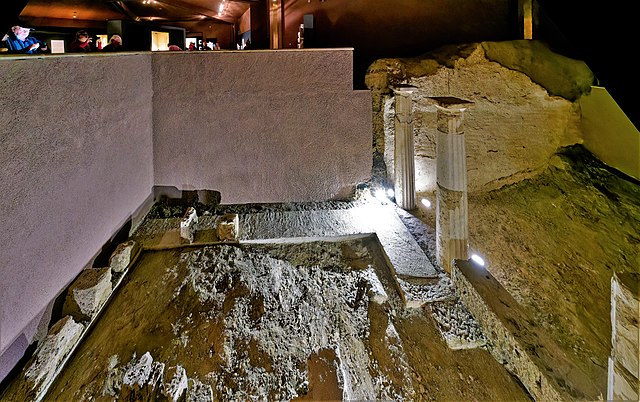
Emerging Theories and Historical Debates
Scholars continue to debate various theories regarding the Palace of Aigai. Some focus on the palace’s role as a political power center versus a ceremonial site. Others explore the extent of influence from Eastern civilizations on the palace’s design and function. The variation of architectural styles within the complex gives rise to multiple interpretations. These point to a possible intersection of cultural influences that shaped its construction. This ongoing scholarly discourse enriches our understanding of Aigai’s multifaceted identity.
The interpretation of the palace’s relics has also spun various theories about ancient Macedonian society. Artifacts such as ceremonial weaponry, intricately designed armor, and adornments suggest a society valuing military strength and opulence. These objects, coupled with the grand scale and elaborate structure of the palace, point to a refined aesthetic sensibility. They also suggest a distinct social hierarchy within the Macedonian dynasty.
The Palace of Aigai, in its ruinous splendor, continues to captivate and provoke thoughts about our ancient past. The palace is both a monolith of historical significance and a subject of scientific curiosity. As the gateway to unveiling Greek antiquity, it challenges us to ponder the narratives of power, culture, and legacy. The essence of Aigai’s past glory lives on, not just in its physical remnants, but in the continuous pursuit of knowledge it instigates among historians and archaeologists.
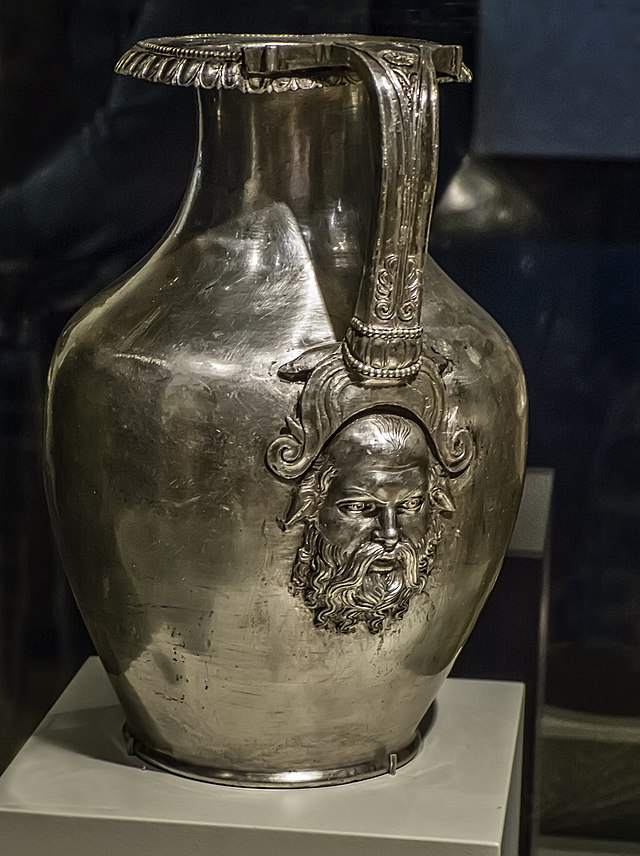
Conclusion and Sources
In conclusion, the Palace of Aigai is a historical site of immense importance, offering a deep dive into the heart of ancient Macedonian civilization. Each stone and artifact at the site provides invaluable insights into the political, cultural, and religious landscape of the period. It underscores the architectural prowess and aesthetic sophistication of the time. The palace remains a focal point for archaeological studies and the theories and interpretations it inspires continue to enrich our comprehension of history. Preserving and understanding such landmarks is vital for our connection to the past and our shared human heritage.
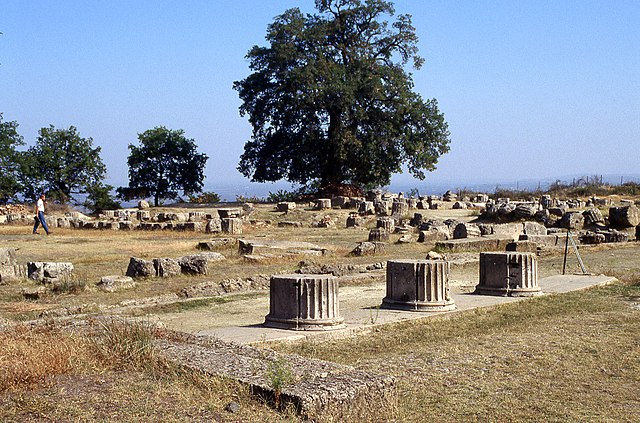
For further reading and to validate the information presented in this article, the following sources are recommended:
Or you can check any of these reputable archaeological and historical texts:
Andronikos, M. (1984). ‘The Royal Graves at Vergina: Recent Discoveries and Research’. Archaeology, 37(1), pp. 14–21.
Borza, E. N. (1990). ‘In the Shadow of Olympus: The Emergence of Macedon’. Princeton University Press.
Chugg, A. (2006). ‘Alexander’s Lovers’. Raleigh, N.C.: Lulu.
Hammond, N. G. L. (1989). ‘The Macedonian State: Origins, Institutions, and History’. Oxford University Press.
Müller, S. (2017). ‘A Companion to the Archaeology of Early Greece and the Mediterranean’. Wiley-Blackwell.

